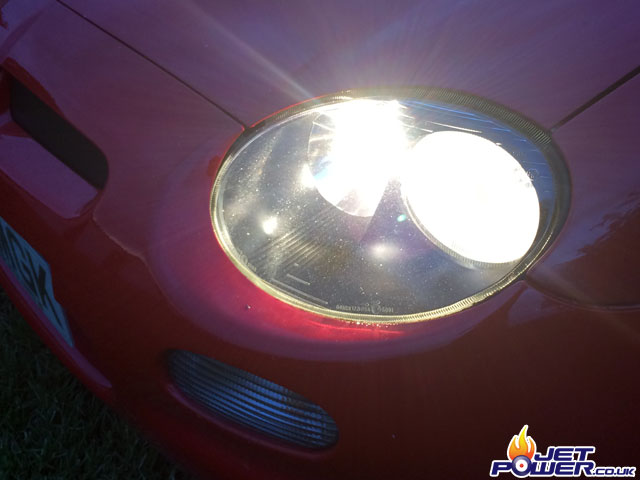Lots of lessons learnt, time to improve on performance and reliability.
I’m starting by upgrading the cars drive lead acid battery’s with Nickel Metal Hydride Batteries (NiMH) that have been salvaged from a Honda Insight Hybrid Car. There are normally 20 of these sticks in the Insight, initially I will be using 48 of them. The battery’s come in sticks made up of 6 cells and the nominal voltage is 7.2volts per stick. The cells have an advantage that they can if required handle a load of up to 100 amps, as I will have two strings of 24 sticks, I have a potential of 200amps at somewhere near 172volts. (that’s the theory).
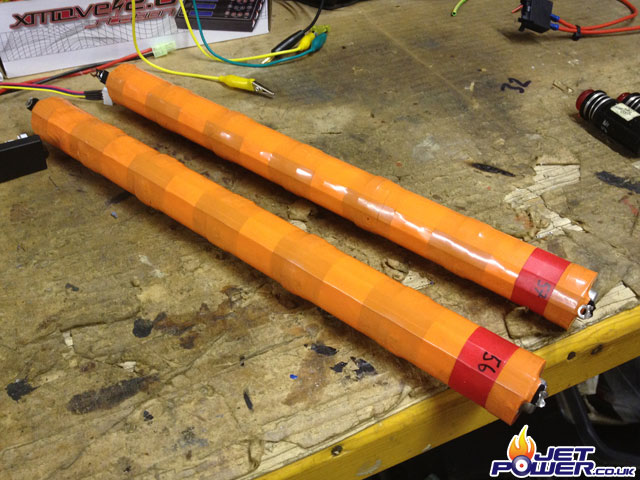
Pictured are the NiMH battery’s, there is a downside to these units, they don’t hold their charge for long and also the cells have been in a discharged state for some time, essentially the cells need to be brought back to life. My solution is by charging them singly with hobby RC chargers, then making a record of the discharge rates of each battery over a period of 2 weeks. This process will help identify any problematic sticks.

To make charging a little easier I have now made a battery tray that you just place the batteries on to to charge. This saves a fair bit of time messing around with crocodile clips etc.





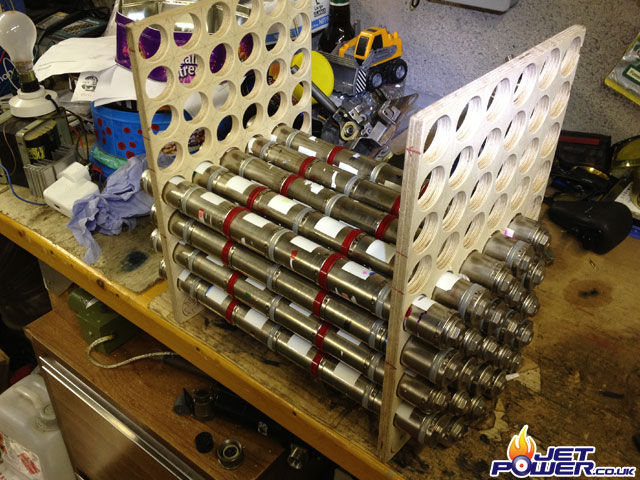
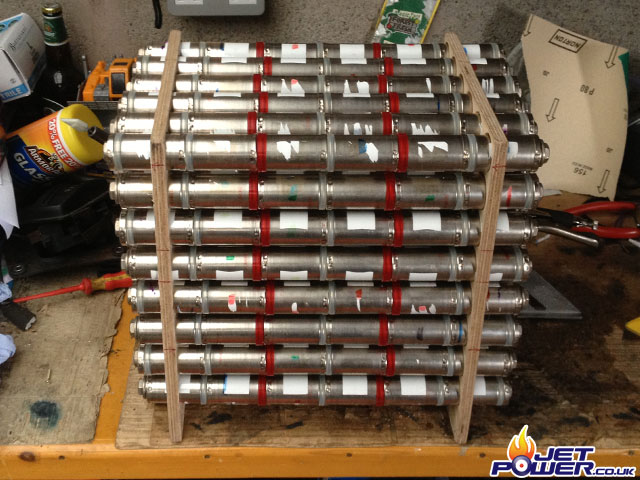


One of the things that would help to improve the performance of the car would be to increase the power capability of the speed controller. Fortunately Paul was happy to rework his MkI model. Pictured are some of the components that are going to be reused, the other required parts are yet to be sourced.

The ESC, once finished should have a power rating of about 300Volts at a max of 400Amps. This would be the combined power of a fully charged set of batteries and the generator working at 100%.
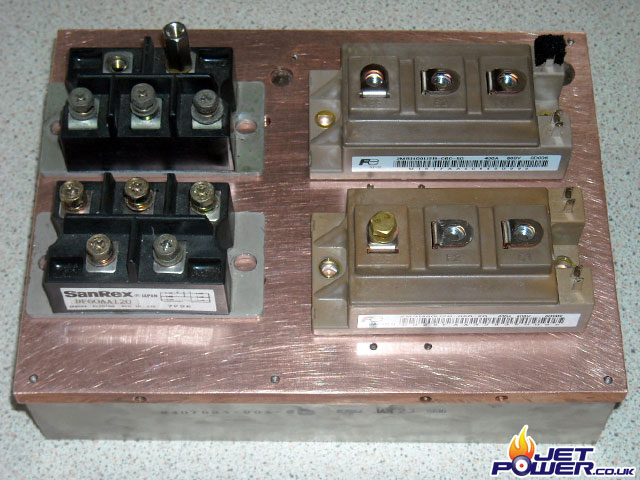
Paul has started making the ESC box from sections of cut aluminium, mounted to aluminium square section for rigidity. Pictured is the cooling air exit matrix, the power connector will be mounted on to the right and will when finished connect the speed controller to the motors.

The business end of the speed controller. The 4 pole Harting connector provides the controller with traction power from the generator and batteries, then we have the cooling fan sucking air inwards over the heat sink, followed by the data and control input/ outputs. Looking good.




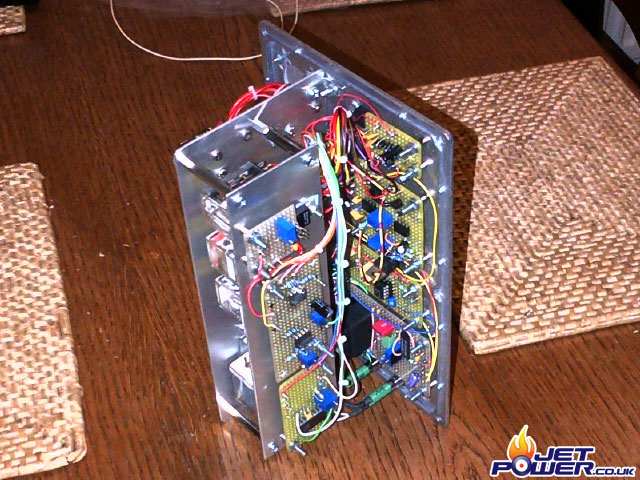
There was always a lot of faffing about with the Hydrogas units, a pleasant ride sure, but when part of the development of the car meant removing the subframes regularly, then they soon became a pain.

When Simon Goldsworthy was over doing a magazine feature for MG Enthusiast he mentioned a company called Suplex that made after market suspension units. A phone call was made and a deal was struck.

Trial fitting to the rear subframe.

There has been no reason (yet anyway) to remove the front subframe, so the suspension change was carried out in situ, an hour or so and they were both done.

The upgrading of the transmission required the purchase of another MGF, mainly for use as spare parts, it’s going to be handy to have spare panels and fittings from this donor. So a late night session ensued and the donor car has now pretty much been stripped bare.

We had a sunny day and as the evening set in we made a start, as we are just coming out of winter and being the last day of february the vibe was good, everything went to plan, not one seized bolt!

This image shows the rear sub frame with the engine removed, the plan will be to get the four motors hooked up front to back and connected to the gearbox input shaft. First the next job is to give the sub frame a good clean with a power washer.

At this point I was in two minds whether to keep the clutch in the final assembly so that easy gear changes on the move could be implemented, however the extra work required, not to mention the cost made it my second choice, I now have to concentrate on connecting the electric motor’s drive shaft to the shaft on the gearbox.

Anyone that likes building these types of things will tell you that splines are a pain to replicate, however I already have one, just a matter of stripping the original drive plate to it’s component form.

And hey presto, a bit of work in the lathe and this will act as the drive coupling and it didn’t cost a penny, which is unusual, more on this later.

The Lynch Motors had to be stripped down so that I could replace the drive shafts for the multiple drive units. Somebody said to me be careful when working with the magnets on the Lynch, I brushed this of as a bit of Bull, but then I got my fingers clamped in between the armature and the magnets, the pull they produced was unbelievable. It was almost a trip to hospital, but not quite – Ouch.

Pictured are one of the three replacement drive shaft assembly’s that enable you to hook up the Lynch Motors front to back to give you more power.

The rotating assembly with the new shaft in place, actually the shafts are fitted through the front of the motor plate, this was just a test fit.

The four motors lined up to give me an idea of spacing’s and the total size that will be required to mount them.

I got my friendly neighborhood CAD Man Will to draw me up some motor mounting plates, these will support the motors in the final assembly. The Laser Cutting was carried out by Rednal Pneumatics in Oswestry.

Plates in place, supported by some 35mm aluminium tubes that I had machined by my local engineer. Next I will look at fabricating a bell mouth cover plate that will support the motors.

Will popped over tonight and we made a template of the Bell Mouth fitting, he’s promised to draw it up in CAD for me, the plate will be where the motors attach to the gearbox.

Pictured is the final product, show bolted in to place using M12 Bolts. I chose Rednal Pneumatics again as they provide a reliable and friendly service.

Nearly completed assembly, A torque reaction and end shock mount support have yet to be made.

Shown is the Taper Lock type Cush Drive mounted on to the final drive motor, capable of 160Nm.

The Cush Drive on the Gearbox side shown with the original clutch drive plate spline pressed in to place.

And fitted to the gearbox, all very snug!

A fitment test to see how much clearance there is. I was quite worried about this part, but all has gone well and there are no issues.

There is about 35mm space between the tyre and the Motor Brush Cover, phew – ample spacing. Now to remove the sub frame again and finalise the support mounts.

There are numerous advantages of using the original gearbox, one of them is being able to use an original MGF Dash Clock assembly. I wanted the tacho to be functional and display the motor’s RPM as it would have done with the petrol engine. The Reluctance Probe shown above together with a bit of electronics will give me this information though the cars original displays.

Its’ been a bad day.
This variation of the transmission will not last and I am gutted and very annoyed. The cost not including my time runs in the thousands and it’s all wasted. The problem lies with how the motor adaptors work.
# They rely on a metal to metal adapter with no play or cushioning.
# To be fair the design is for mounting two motors only, with four the slack between all the adaptor points is huge, this would result in lots of clanking when the throttle was reduced, for example when driving down an slope.
# The adapter plate contact area is absolutely minimal due to the space available between the armature and brush holder of the motor. Thus no allowance can be made for thermal expansion.
# Alignment of the motors is absolutely critical otherwise the drive to the six M6 cap head screws will be off centre, this would then result in the shearing of the cap head screws because the load is not evenly distributed.
# It’s fair to say the Lemco motor is a superb piece of kit, but the motor expansion adapters and design are in my opinion an after thought, unfortunately I was sucked in to the idea because it ticked all the box’s.
Back to the drawing board.

After much deliberating between Paul, Ian & Myself, we have came to the conclusion that a viable choice of an alternative motor would be a Warp11 motor, made by the company NetGain. Their owner, a knowledgeable chap by the name of George answered all of our questions regarding options and specifications. The order has now been placed, though we are going to have to wait four weeks or so before some become available.

Getting to today seems to have taken ages, but the motor is now in the UK! For what it’s worth, the above picture is taken in front of warehouse 316, the UPS building at Manchester Airport and I am waiting the forklift driver to bless me with a rather large, red DC Electric Motor! I do have to say thanks to Ian & Paul, their enthusiasm and contributions to this project have been vital and without them I would have given up a long time ago.

The first peek at the motor and Freddie seems to be suitably impressed.

And here is one Series Wound DC Motor you wouldn’t want to drop on your toe!

I had a 12mm thick steel plate laser cut (thanks again to Will for the CAD) for the fitment on to the motor (drive end) and was lucky to be able to make use of four aluminium spacers that were originally made for the Lynch Motor setup, this then bolts to the original Bell Mouth plate using M16 bolts.

The spacers are required to allow for the Cush Drive coupling, a safety grill has yet to be made. The securing bolts pass through the bell mouth plate, then the spacers and are secured in the 12mm plate which has been carefully tapped.


The end motor supporting plate has been cut to allow a small amount of rotation adjustment to make sure when the sub frame has been refitted that the motor hangs down as vertically as possible.

Pictured is the end motor support frame along with the motor support bush assembly, again I started to run out of ideas on how to do this without increasing costs, bearing in mind this is now transmission V3!

A spacer was machined to space the Cush Drive the correct distance from the motor and a stepped key was also made due to differing sized key slots.


And Hey Presto, one complete Transmission V3!
Recently fabricated steel components have been painted with red oxide for now, when the budget allows and the transmission proves it’s worth I will get the whole lot powder coated.


The motor fits nice and snug out of the way with the sub fame re-attached to the car.
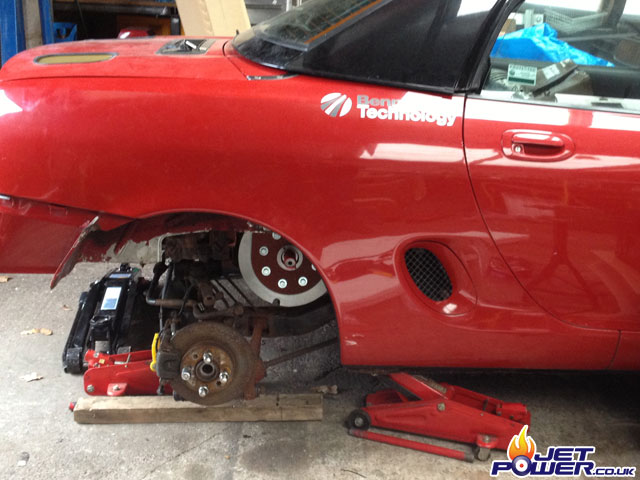
The original speed sensor that I added proved to be particularly unreliable so plan B was brought in to action. A small 16 tooth sprocket has been secured to the other end of the motor on it’s auxiliary shaft, this should give a more stale readout, the oscilloscope has yet to confirm this.

And to make sure it doesn’t catch your fingers and to help stop foreign debris fouling the sensor a protection cover has been made using 4″ drain pipe, a piece of carbon sheet and some aluminium.
Beat that Mr Maker!

As a-ha once said, I hunted high and low for these engine indicator gauges, all 10ma FSD gauges apart from the oil pressure gauge. Electronic problems driving the pressure gauge will probably mean this particular gauge will not be used and I will have to use an unmatched weston gauge.

I modified the back end of the MGF’s center console and fixed the aluminium gauge panel to it using super strong polyurethane glue.

The red cover panel is a piece of powder coated aluminium which serves to cover the gauge retaining screws.

For the indicators that will display the status of the speed controller I have opted to use LED Bar lights mounted on to a piece of epoxy strip board. This unit will then be placed behind a legend displaying the status messages.

These are the pictures of the the legend that I have made using my vinyl cutter and held up against different colour’s on my computer screen background. The vinyl was cut in negative and then stuck to the back of a piece of smoked perspex sheet, thus you should only be able to see the text if the back light is illuminated. The abbreviations are as follows, from top left:

Max Volts, Max Current, Max Battery Drain, Max Generator Power, Battery Float, Max Battery Charge, Low Battery, Motor Over speed Trip and Low Brake Vacuum.

The final legend assembly with a Bicc style connector on the one end, the connector will be useful should the unit need to be removed for servicing outside of the car, in fact we have tried to build the whole car from various easy to remove modules.

Electrical diagnostics work.

AC-DC voltage converter, this units outputs 14 and 18 volts and is used to charge the car battery and the engine starter motor and ecu. The heat sink on the right houses a couple of power diodes which help stop the battery’s discharging through the converter when not in use.

Finished back ‘under’ shelf electronics.

A new back shelf has now been made from 2mm Aluminium with 8mm edging trim which will help stop any rattling, on top of this the will be a sheet of 10mm sound proof closed cell foam and then the original carpet to finish.

A Perspex panel has now been made to cover the top of the speed controller also a hole has been made in the aluminium back shelf and carpet so that the controller can be viewed.




